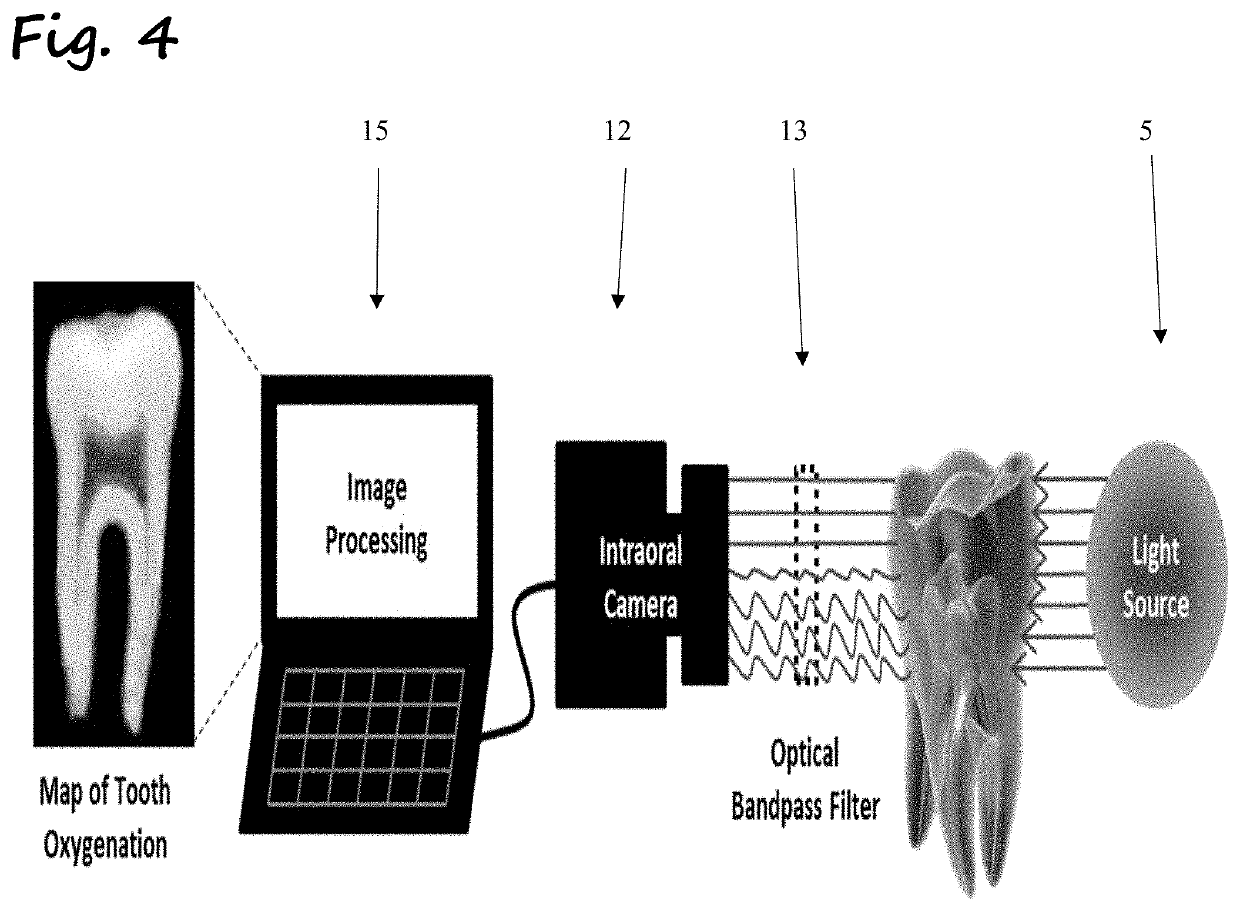Photoplethysmography Imaging (PPGI)-Based Pulp Vitality Test
a technology of photoplethysmography and vitality testing, which is applied in the field of photoplethysmography imaging (ppgi)based pulp vitality testing system, can solve the problems of false positive or negative, difficult diagnosis of endodontic maladies, and inability to provide information about the state of pulp tissue,
- Summary
- Abstract
- Description
- Claims
- Application Information
AI Technical Summary
Benefits of technology
Problems solved by technology
Method used
Image
Examples
example 1
ion of Prototype PPGI Based Pulp Vitality System
[0026]Imaging hardware and optics will be configured to measure light transmitted through the perfused tooth at discrete wavelengths in the visible-red and near-infrared spectrum. Image analysis software will be developed to process the images, and extract physiological characteristics associated with the pulse. The hardware configuration and imaging parameters will be optimized to maximize signal quality and resolution. A printed circuit board (PCB) located inside the bitewing was designed for production to operate the LED light source.
example 2
f the PPGI Based Pulp Vitality System Using an Ex Vivo Perfused Tooth Model
[0027]Ex-vivo tooth model: A circulation system is designed to simulate pulp hemodynamics and oxygenation by pumping blood through the pulp chamber of extracted human molars. An oxygenator, which precisely controls blood oxygen saturation by promoting gas exchange between blood and a controlled mixture of oxygen, nitrogen, and carbon dioxide, will be used to condition reservoirs of blood representing both arterial and venous oxygenation saturation levels. Blood oxygen saturation in the arterial and venous reservoirs will be measured using blood gas analysis to confirm target the oxygenation. A dual dispensing pump will be used to alternate the flow of arterial and venous blood into the pulp to simulate changes in regional blood oxygenation during the cardiac cycle. An algorithm was developed to control the rates and volumes of the dual syringe pump, camera video acquisition, and gas flow during validation tes...
example 3
Determination of ROI Using Machine Learning
[0030]Future developments will incorporate machine learning algorithm to automatically determine ROI. The imaging system will be optimized by testing multiple camera-light configurations, and using wavelengths of interest throughout the visible-red and near-infrared spectrum, to maximize the strength and resolution of the measured signals. Simulations will be run with the teeth illuminated from either or both lingual and occlusal surfaces. Likewise, camera-position will be tested facing the buccal or occlusal surfaces. In each configuration, a series of wavelengths will be evaluated to identify those which exhibit the greatest signal strength, maximizing the contrast between images captured during the systolic and diastolic portion of the pulsatile waveform. During the initial testing, low venous oxygen saturations will be used to maximize the contrast between arterial and venous light absorption and serve as proof-of-principal for the tech...
PUM
 Login to View More
Login to View More Abstract
Description
Claims
Application Information
 Login to View More
Login to View More - R&D
- Intellectual Property
- Life Sciences
- Materials
- Tech Scout
- Unparalleled Data Quality
- Higher Quality Content
- 60% Fewer Hallucinations
Browse by: Latest US Patents, China's latest patents, Technical Efficacy Thesaurus, Application Domain, Technology Topic, Popular Technical Reports.
© 2025 PatSnap. All rights reserved.Legal|Privacy policy|Modern Slavery Act Transparency Statement|Sitemap|About US| Contact US: help@patsnap.com



